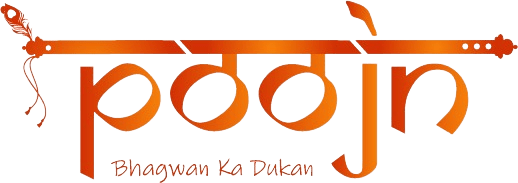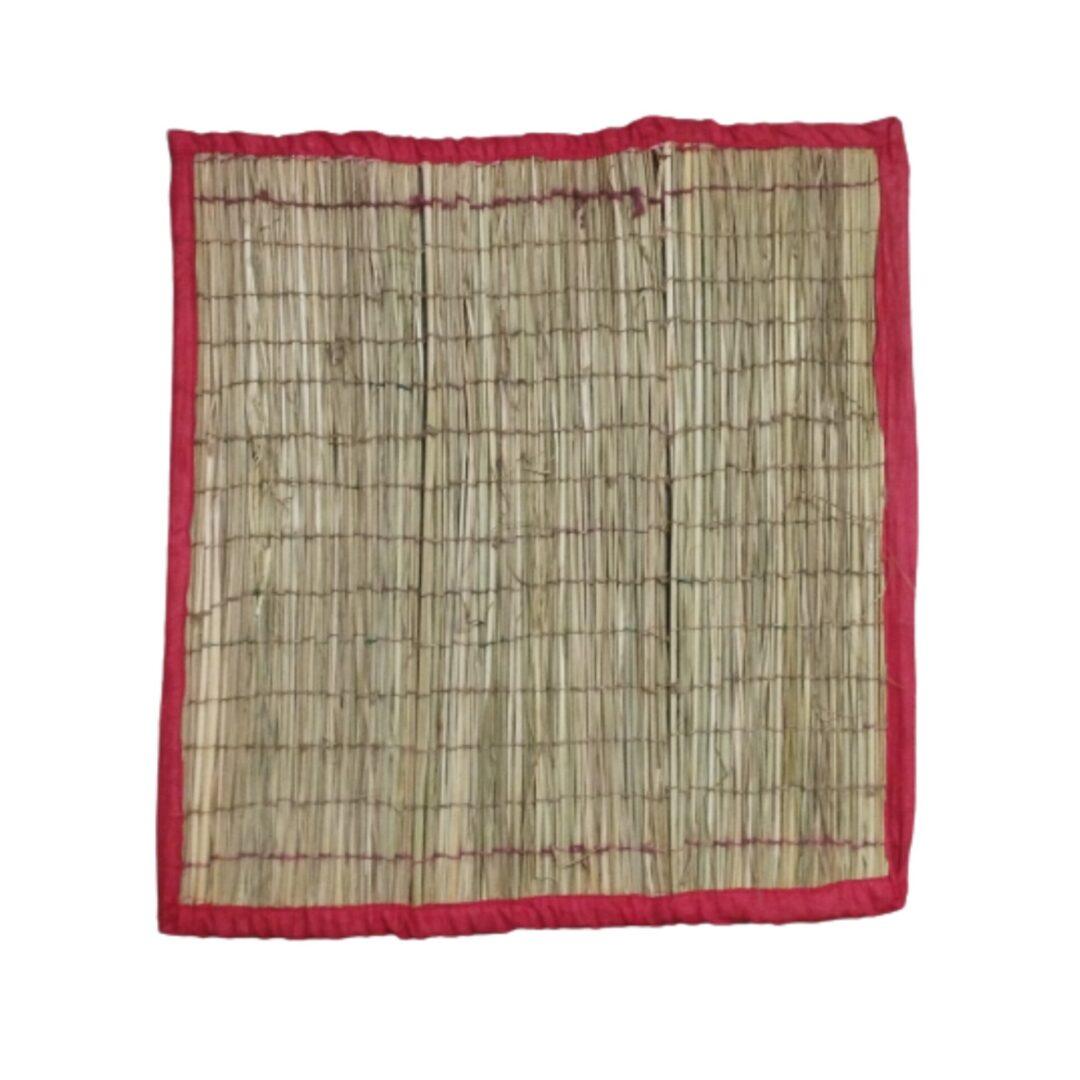Kushasan Or kush asan is made of special kind of grass called KUSH. It’s an ancient / vaidic process to made asan for various purpose of worship, meditation etc.
A “Kush grass mat” typically refers to a mat or carpet made from Kush grass, also known as Vetiver grass (Chrysopogon zizanioides). Vetiver grass is a tropical plant known for its aromatic roots, which have a pleasant, earthy fragrance. Here are some key points about Kush grass mats:
- Material: Kush grass mats are made from the dried and woven roots or leaves of the Vetiver grass plant. The roots are the primary part used for their pleasant scent and durability.
- Fragrance: Vetiver grass is known for its natural fragrance, which is earthy and woody. Kush grass mats are popular for their ability to release this soothing aroma when used, making them a popular choice for home decor and aromatherapy purposes.
- Cooling Properties: Kush grass mats are also valued for their cooling properties. They are often used as sleeping mats in hot and humid regions because they can help regulate temperature and provide a cool and comfortable sleeping surface.
- Durability: Kush grass mats are durable and can last for a long time with proper care. They are resistant to moisture and insects, which makes them suitable for both indoor and outdoor use.
- Uses: These mats are used for a variety of purposes, including as floor coverings, wall hangings, yoga mats, meditation mats, and even as car seat covers. Their fragrance and cooling properties make them particularly appealing for meditation and relaxation.
- Aromatherapy: Kush grass mats are often used in aromatherapy sessions. By adding a few drops of essential oils to the mat, the natural fragrance of the Vetiver grass combines with the oils, creating a calming and therapeutic atmosphere.
Kush grass mats are popular in many parts of the world, especially in regions where Vetiver grass is abundant. They are valued for their natural and eco-friendly properties, as well as their cultural and practical significance.
Kush grass mats, also known as kusha grass mats or kusa grass mats, have been used traditionally in various cultures around the world for different purposes, including religious and spiritual practices, as well as for practical and decorative uses. The names for these mats can vary depending on the region and the language spoken. Here are some names for kush grass mats across the world:
- India: In India, these mats are often called “kusha” mats or “kusha asana.” They are commonly used in Hindu rituals, especially during religious ceremonies and meditation.
- Japan: In Japanese Zen Buddhism, similar mats made from straw or rush grass are called “zabuton.” They are used for meditation and sitting cushions.
- Tibet: In Tibetan Buddhism, meditation mats made from grass or straw are known as “tibetan seat mats” or “gomden.” They are used for meditation and prayer.
- China: In China, similar mats made from reeds or straw may be referred to as “zafu” or “meditation mats.”
- Thailand: In Thai culture, similar mats are known as “phuang malai,” and they are often used for seating and decorative purposes.
- Africa: In various African cultures, mats made from grasses or reeds are used for seating, sleeping, and as floor coverings. The names for these mats can vary widely across different regions and languages.
- Middle East: In some Middle Eastern countries, mats made from palm leaves or other natural materials may be used for seating and prayer. The names can vary based on the specific material and local dialects.
- Native American cultures: Native American tribes have a long history of using natural materials to create mats and rugs for various purposes, including seating and ceremonial use. The names for these mats would differ among tribes.
- South America: Indigenous peoples in South America have also used natural materials to weave mats and rugs for practical and ceremonial purposes. The names would vary among different indigenous groups.
It’s important to note that the names for these mats can be highly localized and can vary even within a single country or region. Additionally, the specific materials and weaving techniques used may vary, leading to different names for similar types of mats.
In India, kusha grass mats or kusha asanas may have different names in various regions and languages. Here are some regional names for these mats in India:
- Hindi:
- Kusha Asana (कुश आसन) or Kusha Mat (कुश मट)
- Sanskrit:
- Darbha Asana (दर्भ आसन) or Darbha Mat (दर्भ मट)
- Tamil:
- Kusa Pattai (குச பட்டை)
- Telugu:
- Darbha Gaddi (దర్భ గద్ది) or Kusa Gaddi (కుశ గద్ది)
- Bengali:
- Kusha Asan (কুশ আসন) or Kusha Mat (কুশ ম্যাট)
- Kannada:
- Darbha Gaddi (ದರ್ಭ ಗದ್ದಿ)
- Malayalam:
- Kusa Pattom (കുശ പട്ടം)
- Marathi:
- Darbha Aasana (दर्भ आसण) or Darbha Vastra (दर्भ वस्त्र)
- Punjabi:
- Kusha Asan (ਕੁਸ਼ ਆਸਨ)
- Gujarati:
- Darbha Aasan (દર્ભ આસન) or Kusha Asan (કુશ આસન)
- Odia:
- Kusha Aasana (କୁଶ ଆସନ) or Kusha Pata (କୁଶ ପଟ)
- Assamese:
- Kusha Pat (কুশ পত)
Please note that the names may vary slightly in pronunciation and spelling across different dialects and regions within India. The use of kusha grass mats is particularly common in Hindu religious rituals and ceremonies, especially during meditation and worship.




Reviews
There are no reviews yet.